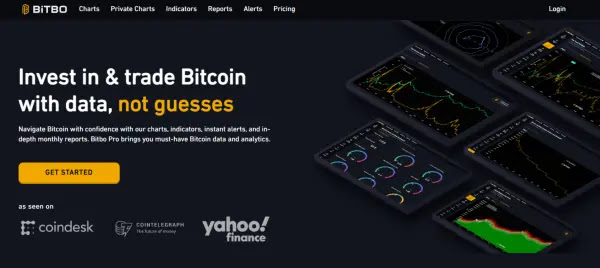The emergence of bitcoin exchange-traded funds (ETFs) is a noteworthy development at the intersection of traditional finance and growing digital assets. These innovative products combine the promise of Bitcoin with the established structure of ETFs.
This paper examines bitcoin ETFs comprehensively - their mechanics, regulations, advantages, risks, and predictions. Deconstructing this complex innovation provides understanding for individuals and investors engaging with Bitcoin ETFs.
Understanding Bitcoin ETFs
Bitcoin ETFs have disrupted traditional markets by demonstrating the hallmarks of digital innovation and flexibility. Accessible on exchanges, they bridge conventional finance and cryptocurrency. Bitcoin ETFs offer passive crypto market exposure without the complexities of direct ownership.
They uniquely diversify portfolios by integrating cryptocurrencies without single-asset volatility exposure. Price fluctuations spread across investors reduce individual risk. This diversification strategy aims to boost resilience and returns.
Bitcoin ETFs also enable traditional investment strategies like shorting and leverage. Maintaining crypto innovation, they maximize profit opportunities and flexibility.
Ultimately, bitcoin ETFs successfully combine cryptocurrencies' revolutionary qualities, like Bitcoin, with the stability, efficiency, and predictability of conventional instruments. Their convenience and flexibility show financial innovation reshaping the industry.
Bitcoin ETFs represent financial system evolution with blockchain and cryptocurrencies. Understanding their prominence and potential remains indispensable for astute investors and experts to stay ahead in a changing environment. Considering these pioneering digital finance products positions one at the frontier.
Regulatory Landscape for Bitcoin ETFs
Bitcoin ETFs operate within a strict regulatory framework that significantly impacts investors. In the US, the SEC ensures investor protection, fair markets, and capital formation for ETFs.
However, the SEC has hesitated to approve Bitcoin ETFs due to concerns about market manipulation, liquidity, and custody challenges in the volatile crypto market. Questions about reliable Bitcoin pricing and sufficient trading volumes worry regulators. They were securely storing digital Bitcoins and hacking risks also factor in.
Industry advocates argue Bitcoin ETFs could bring transparency and reduce direct investment risks, aligning with the SEC mandate. Global precedents like Canada approving the world’s first Bitcoin ETF in 2021 fuel hopes for US acceptance.
Regulators balancing innovation and public interest face a delicate task. The dynamic situation continually tests the equilibrium between risk and progress. Adaptability will be key for savvy investors to harness Bitcoin ETF potential as entrepreneurial spirit navigates evolving regulations. Overall, the regulatory landscape decidedly impacts these novel investment vehicles.
Advantages of Bitcoin ETFs
Bitcoin ETFs offer unprecedented market exposure to cryptocurrencies without direct ownership. They present a safer entry point for investors acknowledging crypto potential.
Regulation evolution significantly impacts ETF approval and structure. While the SEC requires protection against manipulation, illiquidity, and custody issues, gradual openness signals. Global precedents like Canada approving the first Bitcoin ETF in 2021 impact the industry.
ETFs enhanced transparency and investor protection through designed safeguards. They create clearer market pictures that foster participation.
Regulators striving to balance innovation and risk often shape new product trajectories with a focus on evolving realities. Adaptability to industry shifts lets investors capitalize on opportunities.
The meteoric rise of Bitcoin ETFs illustrates the symbiosis of traditional finance and alternatives. It represents maturation beyond investment options - transformed regulation and acceptance of unconventional yet rewarding venues. Bitcoin ETFs redefine possibilities with each trade in this just-beginning evolution.
Potential Risks and Downsides of Bitcoin ETFs
While Bitcoin ETFs entice with revolution and returns, risks accompany their volatility. Understanding both sides is key.
The primary risk stems from Bitcoin's speculative nature. Global events can spur intense ETF price swings from bitcoin price changes. Managing this requires nuanced Bitcoin and market knowledge.
Liquidity risk also looms large. Being new, most Bitcoin ETFs trade thinly, potentially slowing transactions and orders during volatility. Sparse liquidity may compound price volatility.
Cybersecurity threats persist due to reliance on digital wallets. While security improves, hacking implications for investors remain.
Regulatory uncertainty poses a shadow. The US has reticence over investor protection and manipulation concerns. Regulatory changes introduce unpredictable risks.
Navigating Bitcoin ETFs demands not just risk appetite but resilience to changes. Success means pivoting strategies nimbly to traverse this uncharted, promising yet stormy sea of innovation and returns accompanied by substantial risks. Investors must establish risk tolerance and stay informed to manage volatility.
The Future of Bitcoin ETFs
Bitcoin ETFs offer diversification by mimicking Bitcoin returns without direct ownership. However, their volatility and unpredictability due to Bitcoin's speculative nature require discerning assessment.
Risk mitigation involves carefully analyzing Bitcoin and wider market trends to understand potential ETF performance. Economic instability could spur significant up/downswings.
Liquidity risk may cause transaction inefficiencies as interest peaks, especially for thinly traded ETFs.
Digital wallets invite increased cyber threats, making robust security systems critical. Fund security measures must be evaluated.
Regulatory environment uncertainty underscores the importance of resilience and following shifts, which significantly impact ETF viability.
Looming risks include potential market manipulation affecting performance and difficulty ensuring investor protection given Bitcoin's decentralized nature.
While Bitcoin ETFs offer exciting opportunities, layers of unavoidable risk require thorough knowledge, balanced perspective, and adaptability to navigate this rapidly changing industry filled with uncertain fluctuations.








No comments:
Post a Comment